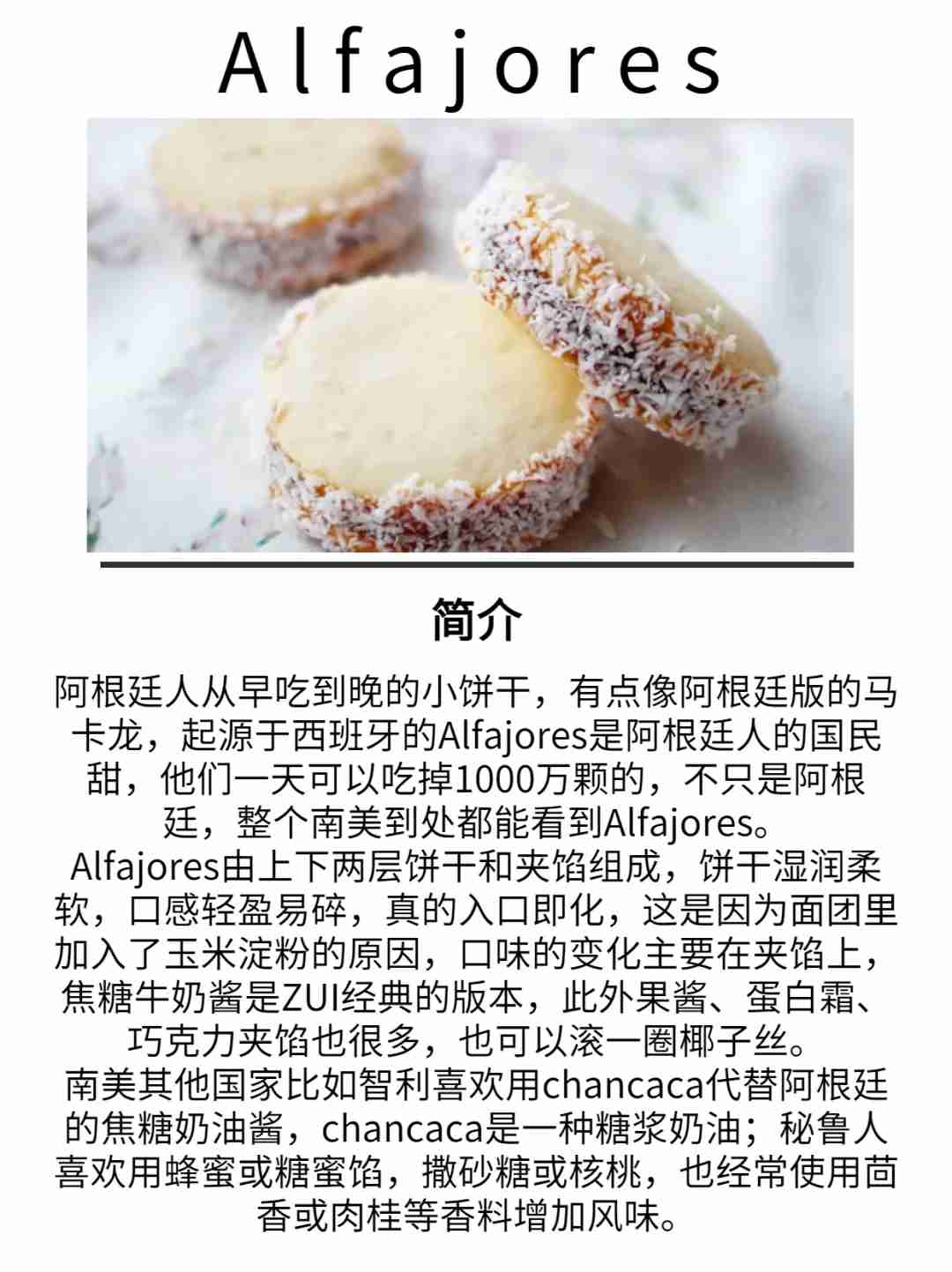Discover the Irresistible Charm of Alfajores: A Sweet Argentine Cultural Icon
From dawn till dusk, Argentinians savor small, delectable cookies that are somewhat akin to the local version of macarons. These treats, known as Alfajores, have become a national treasure in Argentina, with an astounding 10 million of them being devoured every day. Though they originated in Spain, Alfajores have found their way into the hearts and kitchens of people all across South America.

Alfajores are made up of two delicate, soft cookies sandwiched together with a luscious filling. The cookies themselves are moist and crumbly, practically melting in your mouth, thanks to the addition of cornstarch in the dough. The magic of these cookies lies in the variety of fillings, which can transform each bite into a unique experience.

The most traditional filling is a rich, caramel milk sauce, but you can also find versions filled with jam, meringue, or chocolate, often rolled in coconut flakes for an extra layer of texture and flavor.

In other parts of South America, the flavors and fillings take on regional twists. In Chile, for example, chancaca, a type of syrup cream, is the preferred filling instead of the caramel cream used in Argentina. Peruvians, on the other hand, enjoy honey or molasses fillings, often sprinkled with sugar or walnuts, and enhanced with aromatic spices like anise or cinnamon for an added depth of flavor.

🌈The history and origin of Alfajores
The story of Alfajores is a rich tapestry woven through centuries. Their roots can be traced back to at least the 8th century, when the Moors, known for their exquisite Arab cookies, conquered the Iberian Peninsula. They brought with them a bounty of ingredients, including sugar, syrup, nuts, and cinnamon, which became integral to the creation of these sweet delights.
During the 16th-century colonial period, Alfajores spread from southern Spain to the entire Spanish territory and eventually to the Americas. In Argentina, the recipe was refined and adapted, transforming it into a beloved specialty that has since become a symbol of the country’s culinary heritage.

